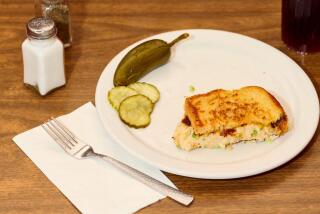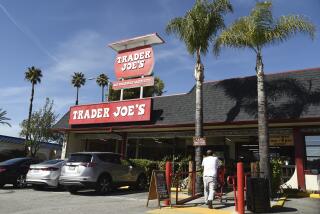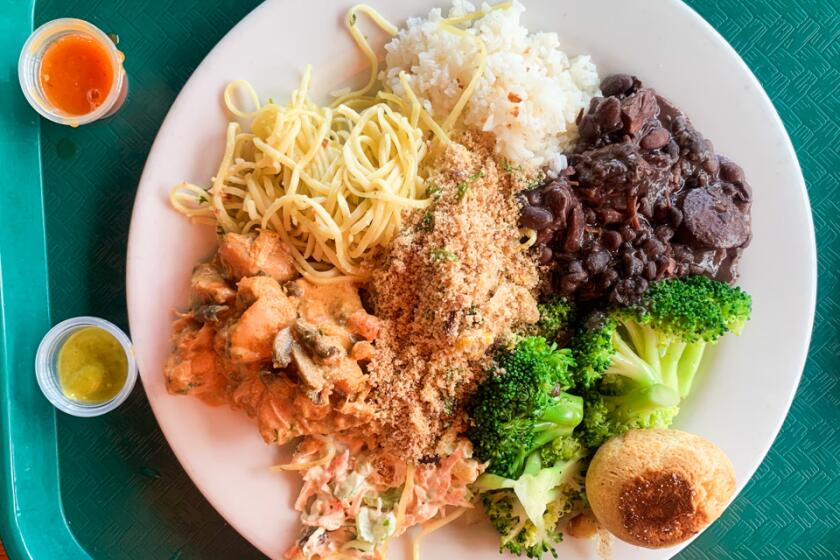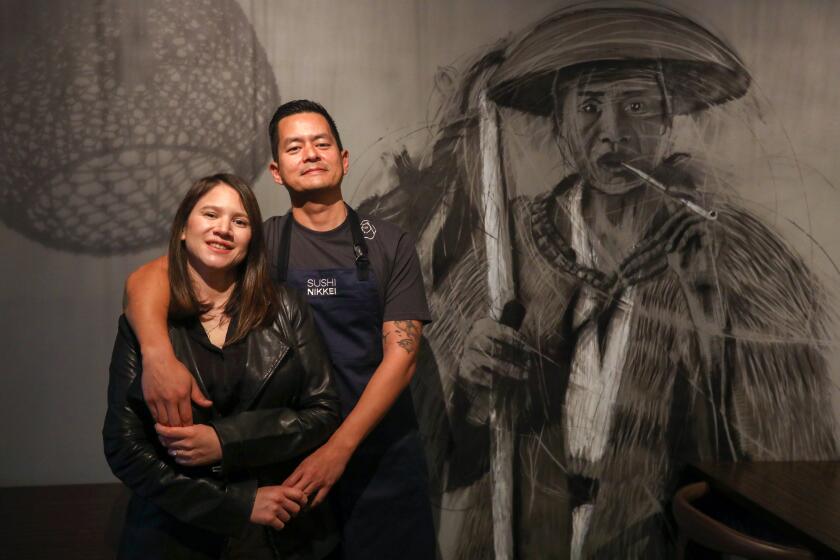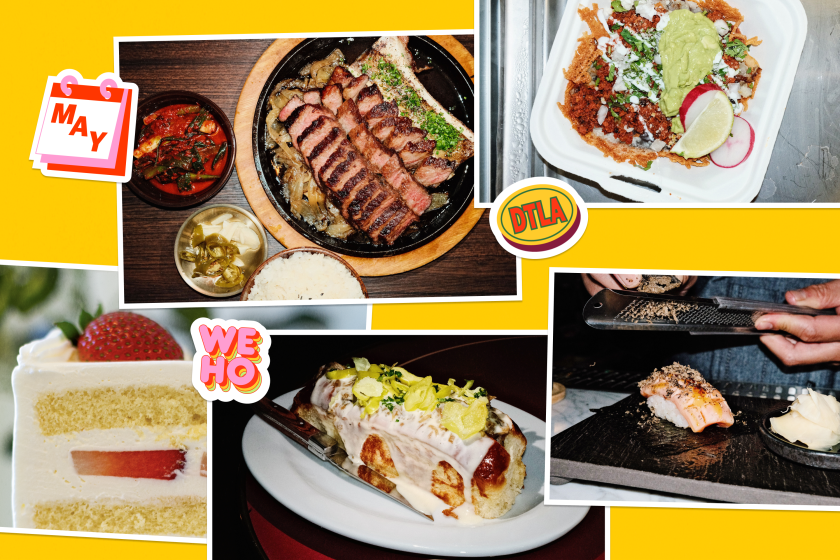Market Watch: Crane melon a true ‘heirloom’
The word “heirloom” is commonly applied to the produce sold at farmers markets, but the concepts behind it frequently are misunderstood or stretched, both by growers and the public. Originally the word was a legal term referring to goods that descended to an heir along with real property; by extension, it came to refer to something of special value handed down from one generation to another.
In a horticultural context, the Oxford English Dictionary defines “heirloom” as “a variety of plant or breed of animal which is distinct from the more common varieties associated with commercial agriculture, and has been cultivated or reared using the same traditional methods for a long time, typically on a small scale and often within a particular region or family.” The dictionary’s first citation of the word being used in this way came from the New York Times in 1949.
A prime example is the Crane melon, which has a round to pointed shape, with a netted, spotted rind and sweet, aromatic orange flesh. Oliver Crane bred the variety in the early 1900s by crossing four different melons — a Japanese, a Persian, a white and an Ambrosia — and his descendants have grown them ever since at the Crane Melon Barn in Santa Rosa, where the soil and climatic conditions contribute to the fruit’s distinctive flavor, they say.
The Crane melon is such a beloved tradition in Northern California that Slow Food includes the variety in its Ark of Taste of worthy “foods that are threatened by industrial standardization,” the only melon so honored. It usually has not been available in Southern California, but Barbara and Bill Spencer of Windrose Farm, who have a sixth sense for excellent old varieties, started growing Cranes this year and selling them at the Santa Monica Wednesday farmers market.
The original heirloom concept applies most readily to vegetables and the few fruits, chiefly melons, that are propagated by seed. For most heirloom varieties, seed savers take great care to grow them far enough away from other varieties of the same or closely related species so as avoid cross-pollination, which would result in daughter plants that bear crops no longer true to the original type.
Most fruits other than melons are propagated vegetatively, by methods such as grafting or cuttings, so the seed saver concept does not apply to crops like peaches, pears and grapes, strictly speaking. (That didn’t stop an overzealous manager from putting up a sign at the Beverly Hills Whole Foods last fall, promoting “heirloom apples grown from seeds that date back generations.”)
However, the general heirloom idea — excellent older varieties that have been bypassed by modern commercial growers — applies reasonably well to fruits such as Santa Rosa plums or Newtown Pippin apples. The tricky part is that, in some cases, the dominant commercial varieties of a fruit, such as Bartlett pear, Bing cherry or Washington navel orange, have been around for a century or more. (In fact, one enterprising farmer of Washington navels grown on old-fashioned sour orange rootstock markets them as “heirloom navel oranges.”) They’re old and can be very good, but there’s none of the niche or specialty component that is implied by the “heirloom” label. It’s great that such varieties are still flourishing, but some observers prefer the term “traditional” for such older commercial varieties.
How old is old enough to qualify for heirloom status? There’s no set definition, but 50 or 75 years are the terms typically proposed. So depending on the chosen period and just when a variety is considered to have been “born,” the revered Snow Queen white nectarine (cross made in 1957; introduced 1975) or the popular Green Zebra tomato (breeding begun in 1956; introduced 1983) fall short of or straddle the divide.
Darrell and Maria Elser of Elser’s Country Farm in Yucaipa, grow the original Green Zebra and several differently colored variants, including Black Zebra, Yellow Zebra and their daughter Krystal’s own variations on the striped theme, Blood Gulch and Valhalla. When they sell them at the Torrance (Saturday), Redlands (Thursday and Saturday), Palos Verdes and Hollywood markets, few customers fuss about what is or is not an heirloom. Noted authorities, including Carolyn Male and Amy Goldman, include Green Zebra in their books on heirloom tomatoes, so who’s to quibble?
Of course, the fundamental appeal of heirloom produce is not antiquarian but a presumption that older varieties have distinctive, more intense flavors. But old is not always good: Ben Davis apples and Elberta peaches are classic varieties but not particularly tasty.
And new varieties can be very good indeed. To take just one example that’s currently in season, the Emerald Beaut plum, bred by the Zaiger family and patented in 1995, is firm but juicy and very, very sweet; it’s better than its seed parent, Wickson, or its paternal grandmother, Red Beaut. Burkart Farms of Dinuba sells excellent Emerald Beauts at the Torrance (Saturday), Hollywood, Beverly Hills and Santa Monica farmers markets.
What is frequently missing from even very good modern varieties is not just intensity but the complexity of the noblest older varieties. The quintessence of such “high flavor” in apples is the parent of Cox’s Orange Pippin, Ribston Pippin, which originated in Yorkshire, England, around 1700 and at its best has a fantastically rich, concentrated pear drop flavor. Even in its native England, Ribston is known as a finicky variety, but Michael Cirone, an enthusiast for fine fruit, planted 25 trees three years ago in San Luis Obispo and has been bringing the crop to the Santa Monica market. Alas, when grown in this climate, the ripe fruits tend to develop water-core, so that they’re partly riddled with hard, glassy green flesh that in this variety has an off-flavor. It will be interesting to see whether, as Cirone hopes, the disorder will resolve as the trees mature; meanwhile, it’s worth buying a few fruits just for the unaffected parts, to get a hint of the legendary “Ribston flavor.”
Whatever its precise definition, the heirloom concept is continuing to grow in popularity, alongside “fresh,” “local” and “organic.” The National Heirloom Exposition, with a roster of renowned speakers including Alice Waters and Goldman, will be held Sept. 13 to 15 at the Sonoma County Fairgrounds in Santa Rosa.
More to Read
Eat your way across L.A.
Get our weekly Tasting Notes newsletter for reviews, news and more.
You may occasionally receive promotional content from the Los Angeles Times.
